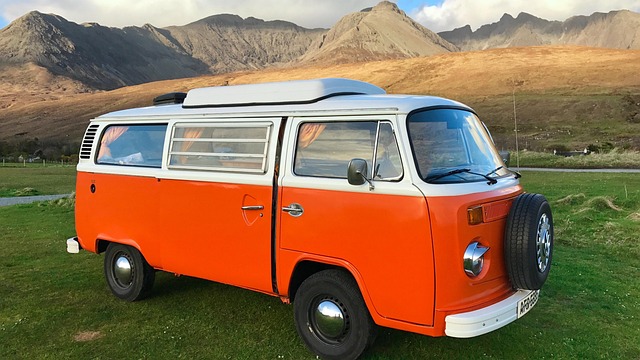Used Motorhomes for Sale Near Me: A Comprehensive Guide
As more travelers seek flexibility and comfort on their journeys, used motorhomes have become an appealing choice for exploring without the high cost of new models. Whether you’re planning weekend getaways or long road adventures, purchasing a pre-owned motorhome can offer both value and freedom. This guide helps you navigate the process - from finding trusted listings to making a secure purchase - so you can hit the road with confidence.

Buying a used motorhome is a major decision that combines lifestyle ambitions with practical research. The right approach can help you balance budget, reliability, and comfort for long trips or weekend getaways. From setting criteria and evaluating condition to arranging financing and insurance, a clear process will reduce surprises and improve long-term ownership satisfaction.
Benefits of Buying a Used Motorhome
A used motorhome often delivers significant value due to slower depreciation after the first few years of ownership. You can access higher trim levels, proven floor plans, and upgrades like solar, leveling systems, or suspension improvements at a lower entry cost. Insurance premiums may be more manageable for older models, and you can review real-world owner feedback on known maintenance patterns. Additionally, many pre-owned units already include essential accessories—hoses, chocks, surge protectors—saving you setup costs.
Researching Used Motorhomes for Sale Near You
Start by defining how you plan to travel: weekend camping, extended touring, or full-time living. Match that use case to classes and layouts—Class B for compact mobility, Class C for family sleeping capacity, and Class A for space and storage. Search local listings through reputable dealers and marketplaces in your area. Look across multiple sources, including dealer networks, RV-specific marketplaces, and community groups, then track asking prices, odometer readings, and equipment lists to spot fair deals. When possible, review maintenance records and any chassis history reports to verify service intervals and accident information.
Evaluating Potential Purchases
Inspect for water intrusion first. Check roof seals, corners, slide toppers, window frames, and floors for soft spots or staining. Look along fiberglass sidewalls for signs of delamination or waviness. Test all appliances on shore power and propane: refrigerator, furnace, water heater, stove, and air conditioning. Run the generator under load and note hours. On the chassis, confirm tire age (DOT date codes), brake condition, fluid leaks, steering play, and suspension wear. During a test drive, evaluate engine performance, transmission shifts, braking, wind noise, and how the coach handles crosswinds. If you are unsure, hire a professional RV inspector to document issues and estimated repair costs.
Financing and Insurance Considerations
Specialty RV lenders and some banks offer loans with longer terms than typical auto financing, but approval depends on credit, down payment, and vehicle age. Expect lenders to request a professional valuation and a comprehensive bill of sale. Budget for taxes, registration, and a pre-purchase inspection. For insurance, request quotes that reflect class, length, storage location, and annual mileage. Compare liability, comprehensive, and collision coverage, plus options like roadside assistance, personal effects coverage, and vacation liability. Extended service contracts and tire and wheel protection can offset risk but should be evaluated against likely repair costs and your ability to self-insure.
Conclusion
A successful used motorhome purchase hinges on clarity about your travel needs, thorough inspection, and realistic budgeting. By combining local market research, careful evaluation of condition, and a financing and insurance plan, you can select a coach that fits your routine and minimizes unexpected expenses over the long run.
Real-world costs and comparison
Used motorhome prices vary widely by class, age, mileage, condition, and brand reputation. Class C models from the mid-2010s often list below many Class B camper vans of the same era, while older diesel pushers can carry premium pricing if maintenance is well documented. Review multiple providers and compare similar floor plans and drivetrain types to gauge value. The examples below illustrate typical listing ranges you may encounter through common providers in the United States.
| Product/Service | Provider | Cost Estimation |
|---|---|---|
| Class C motorhome (2015–2018, gas) | Camping World | $45,000–$75,000 |
| Class A motorhome (2010–2014, gas) | Lazydays RV | $50,000–$120,000 |
| Class B camper van (2016–2020) | RV Trader marketplace | $60,000–$110,000 |
| Class A diesel pusher (2008–2013) | General RV | $90,000–$200,000+ |
Prices, rates, or cost estimates mentioned in this article are based on the latest available information but may change over time. Independent research is advised before making financial decisions.
Beyond listed prices, account for immediate post-purchase needs: new tires if older than six years, battery replacement, sealant maintenance, fluid services, and basic safety upgrades. These items can add several thousand dollars, depending on the coach. Factor storage fees if you cannot keep the motorhome at home, and estimate annual maintenance for oil changes, generator service, roof inspections, and winterization.
In summary, understanding your use case, researching local inventory, and verifying condition are the pillars of a confident purchase. When combined with clear financing, insurance, and total cost planning, they help you choose a used motorhome that suits both travel plans and budget.




